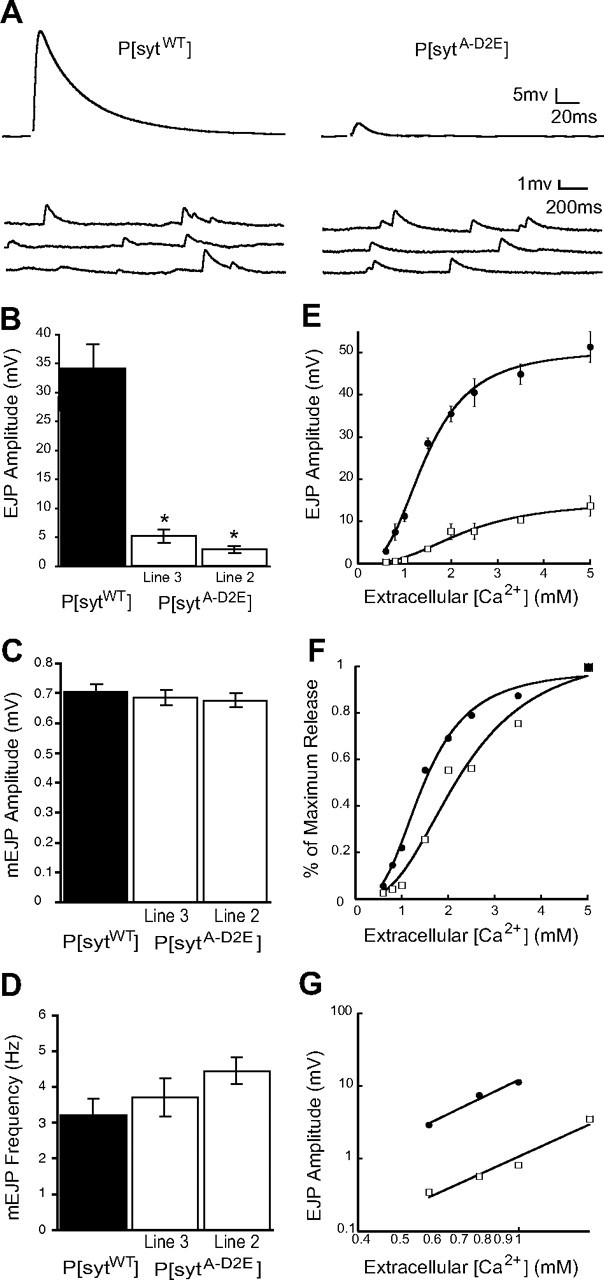Figure 3.

Synchronous evoked release is severely impaired in C2A Ca2+-binding mutants, but spontaneous release remains unchanged. A, Representative traces of EJPs and mEJPs recorded in saline containing 1.5 mm [Ca2+]. B, Mean EJP amplitude was markedly decreased in P[sytA-D2E] mutants compared with P[sytWT] controls (mean ± SEM, *p ≪ 0.001, one-way ANOVA). Neither mEJP amplitude (C, mean ± SEM, p > 0.7, one-way ANOVA) nor frequency (D, mean ± SEM, p > 0.15, one-way ANOVA) varied significantly between P[sytA-D2E] mutants compared with P[sytWT] controls. E, EJP amplitude versus [Ca2+] fit with the Hill equation. F, Ca2+ dose–response data normalized to the maximal response in each line to illustrate the decrease in apparent Ca2+ affinity in the P[sytA-D2E] mutant. G, EJP amplitudes within the nonsaturating range of Ca2+ on a double log plot demonstrate that the Ca2+ cooperativity of release is not changed in the P[sytA-D2E] mutants. A linear regression line was used to determine the slope. Error bars are SEM. Black circles indicate P[sytWT], white squares indicate P[sytA-D2E].
